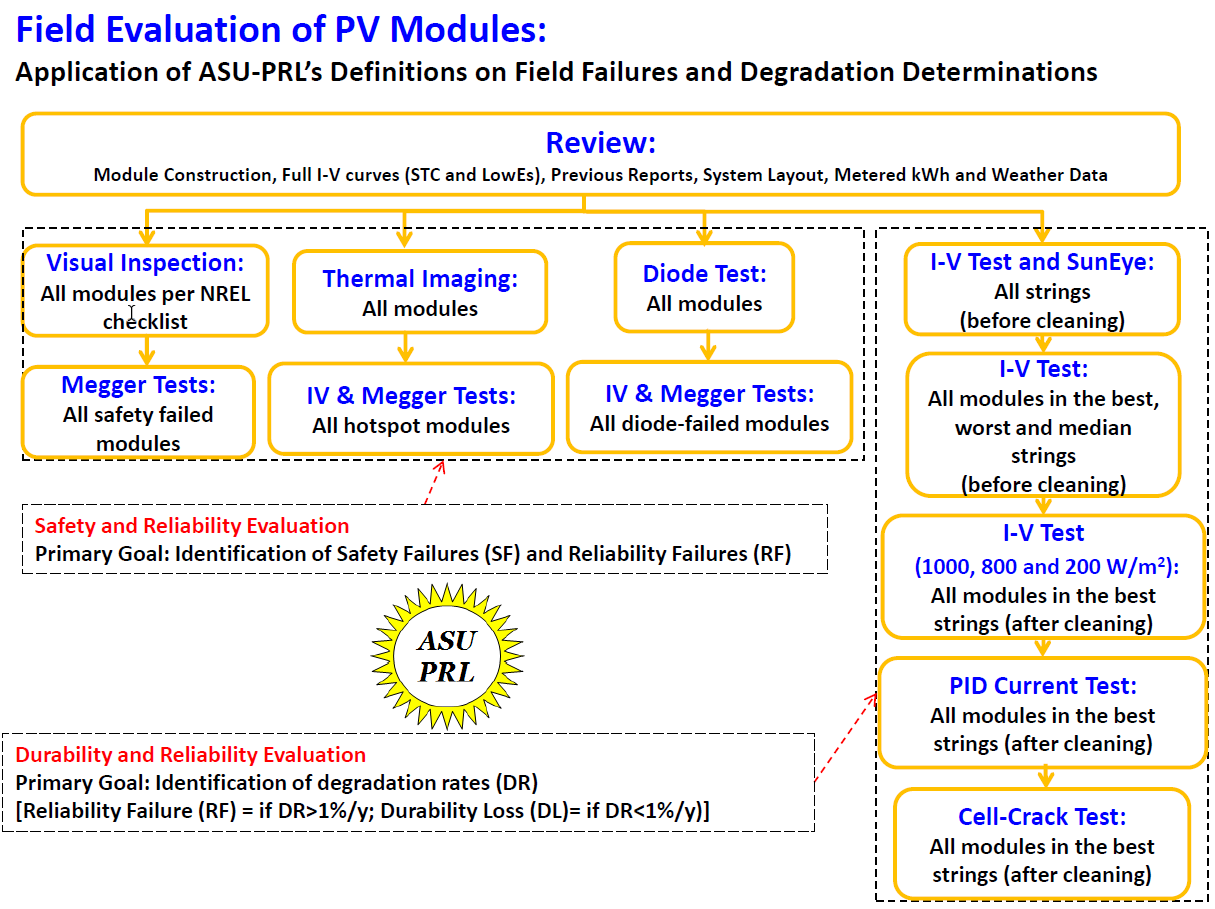What is the issue with inspection costs?
The costs of inspecting one module is equal or even higher than the cost of a new module. SunSniffer offers a way of inspection at a fraction of the usual costs.Decent plant performance testing needs to look at the module.
This can be done either in field or in lab; in both cases usually only on demand, for an acute (emergency) situation.
Costs are starting at 20€ per module for in-field measurements, but can go up to 60€ or more easily for lab measurements.
How elaborate testing can be done shows Arizona State
University (ASU) in a field evaluation in 2014; in this graphic you can see all
testing methods they applied. Only such sound testing can provide valuable and
useful information for most effective O&M and fault management. Yet such
extensive tests make no sense in terms of time or money.
This is highly uneconomically for every day and every plant use!
Now compared to the costs of a new module this uneconomicalness becomes even more evident:
Deteriorating in the last decade, a new modules' cost is now at 60-70€ (60 cells).
If you look at this, wouldn't it make more sense to simply swap a defective module with a certain power loss, instead of first having to examine it in the field?
Sure - but how can it be found, without high costs?
And notifying the manager immediately when the production falls below a certain threshold - like the warranty level?
This way the money saved on error search could be spend on better modules!



